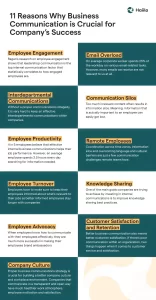5 ways to create a more comprehensive workspace

Inclusive work is better for all, not only the disabled.
The richer your workforce, the wider the range of talents, insights and innovations you invite. A diversified staff team can understand and cater to different customer groups to ensure that you deal with customers as much as possible.
It is also an ongoing task to support people with disabilities and various needs in their work. This is not “checking” or meeting requirements. The core of truly inclusive work should be support, adaptation and communication.
According to the current study, nearly one fifth of them have obstacles. This may be an intangible disorder, such as a long-term health condition, mental health problem, or dyslexia or dyskinesia. It may be more obvious damage, such as hearing loss, vision loss or physical disability.
Obstacles are as diverse as people, and employers and employers should feel that they can have a supportive dialogue around these topics. The Equality Act stipulates that employers have an obligation to ensure that disabled employees work effectively, and there is still much to do.
This document will learn five key methods to help your enterprise create a more comprehensive workspace.
- Adapt to the environment
You can support the disabled in the workshop by adjusting the working environment. First, discuss with employees the personal requirements they may have and the work that best supports them.
Changes can be simple, such as removing physical barriers and obstacles, repositioning specific areas, or adjusting the position of tables and seats. Alternatively, further modifications may be required, such as the introduction of specialized working devices or computer software.
Provide professional advice and, if qualified, financial support. Not all changes should be expensive or substantive, and even small changes will have a great impact.
-
Make
- information accessible
People with disabilities in many organizations find that the way to share information is not always accessible to them. For example, for blind employees, email or bulletin boards may not be the best way to receive important information.
Learn the best way to communicate with colleagues and employees and provide detailed information in many forms.
Sharing information in a variety of accessible ways not only makes everyone feel inclusive, but also is important for improving productivity and overall communication.
-
Perform periodic inspections and Promoting dialogue
A workshop that remains inclusive is usually an ongoing project that constantly adjusts and changes space to meet the needs of new employees. Part of promoting this is to create open dialogue. Everyone has the opportunity to express their concerns, problems or feedback, and understand what works well and what needs to be improved.
Regularly review or schedule workshops to help you evaluate which method is the most convenient, inclusive and suitable for employees to go to the workplace.
Employees should be encouraged to confidently advise or worry about their employers. Employees who feel happy listening and supporting are likely to be loyal, efficient and creative in their work.
- Employee training and cognitive construction
Please consider involving trained medical experts, especially those qualified for mental health first aid.
In recent years, the important growth of millions of employees receiving greater support has given me a deeper understanding of mental health in the workplace.
Of course, it is particularly helpful to have well-trained professionals in the team, but so is the overall culture of developing sensitivity and awareness to disability issues in the workplace. This can be recommended through other courses, training or training workshops.
Sensitivity, enthusiasm and high level of awareness are very important for fostering inclusive work, especially for understanding intangible barriers or mental health problems.
- Provide flexible work options
Anyone can benefit from more flexible job choices, but this is particularly important for people with disabilities.
Flexible business options may include options to delay working at home on a specific date, start or end time, return to business periodically after an accident or medical procedure.
Research shows that flexible task selection does not need to be volatile or destructive in any way. On the contrary, over time, with the improvement of energy level, work life balance and job satisfaction, they tend to bring higher productivity, more satisfied labor force and stronger results.
Providing more inclusive and accessible jobs will greatly help the candidates’ ability and work quality.
For more resources and other suggestions, please visit professional websites such as AbilityNet, the government work plan and relevant chapters of the equality law.








